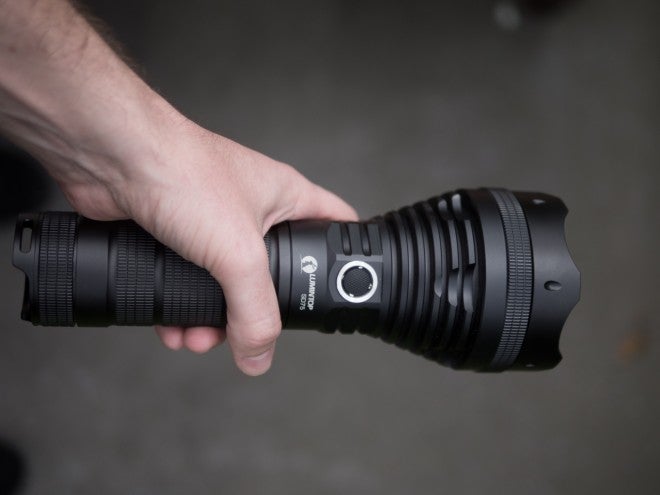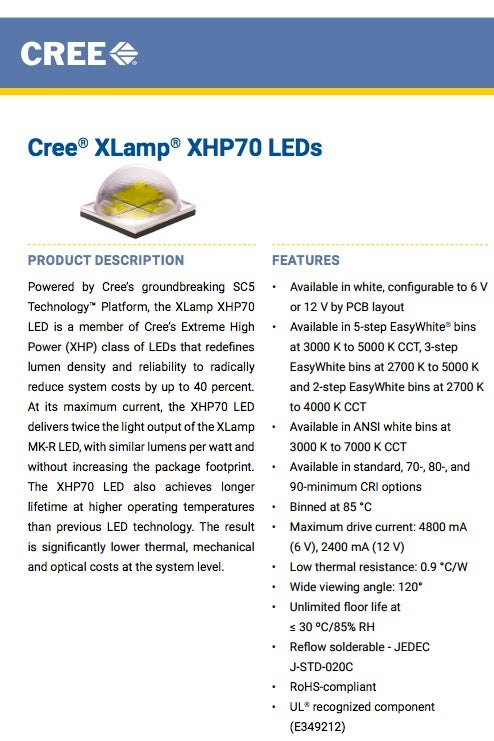(Unless otherwise stated, the information in this review is based on my own observations and measurements, not the official specifications.)
Ever since LED flashlights began taking off, I have wanted to acquire an ultra-high-lumen-output LED flashlight. Until now, I had not for a number of reasons, which I will discuss later in the article. After years of waiting I have finally acquired a 4000 lumen beast: the LUMINTOP SD75, and now I have tested this flashlight extensively and am incredibly happy with it.
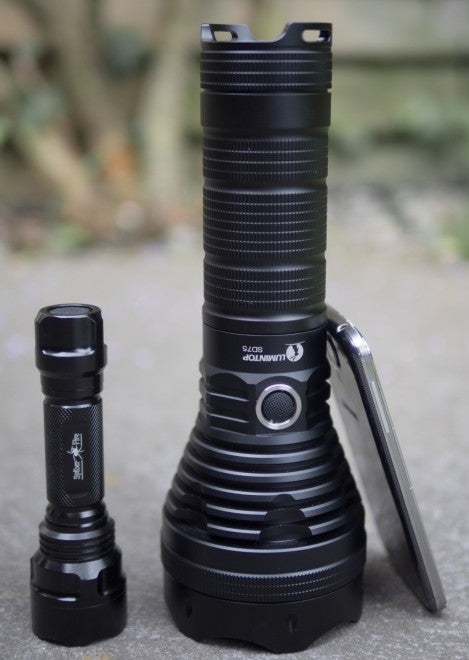
Left – Right: Spiderfire SSC P7 flashlight, the LUMINTOP SD75, Samsung Galaxy S4 phone.
While high-lumen flashlights have been available for a few years, none of them appealed to me. My biggest problem with them was that most had built-in batteries, a deal killer for me. When out hunting, or in an emergency situation, I want to be able to swap out dead batteries not wait a few hours for an internal battery to charge (that is, if a power source is even available!). Also, batteries degrade over time and I want to be able to replace the relatively cheap removable batteries, not purchase an expensive proprietary battery from the manufacturer.

The LUMINTOP SD75 deep reflector and Cree XHP70 LED Lamp.
My other problem with the previous generation of this class of flashlight, and most of the current generation is that they use multiple LED lamps instead of a single lamp. Multiple lamps helps with heat dissipation but results in a beam that almost round, but not quite 100% round. To get the heat benefits from multiple LED lamps, the lamps need to be spread as far apart as possible. In order to spread them apart, the lamp reflectors must be shallow and so not as tightly focused. An example of these multi-reflectors is below; compare it with the single deep reflector of the SD75 above: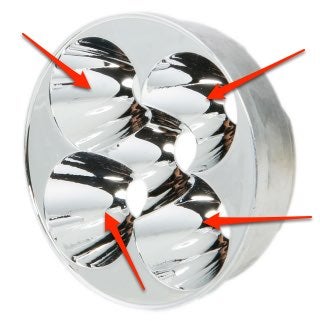
That enough of me discussing flashlights I do not like, let’s discuss the LUMINTOP SD75. It uses an LED lamp manufactured by Cree called the XHP70 (eXtreme High Power 70). This is a new LED lamp that is very efficient and heat tolerant and rated for 4000 lumen. Because of this, LUMINTOP is not having to overdrive the lamp to achieve the high light output, avoiding a decrease in life expectancy.
As far as looks go, it is a handsome looking flashlight. As you would expect the body is made from machined aluminum. It has a single button. Pressing and holding this button turns the flashlight on and off. Pressing and releasing it quickly changes modes. The head separates from the body to expose the battery module. The tail cap unscrews to allow access to the DC charging jack and USB ports for charging USB devices (more on this later).
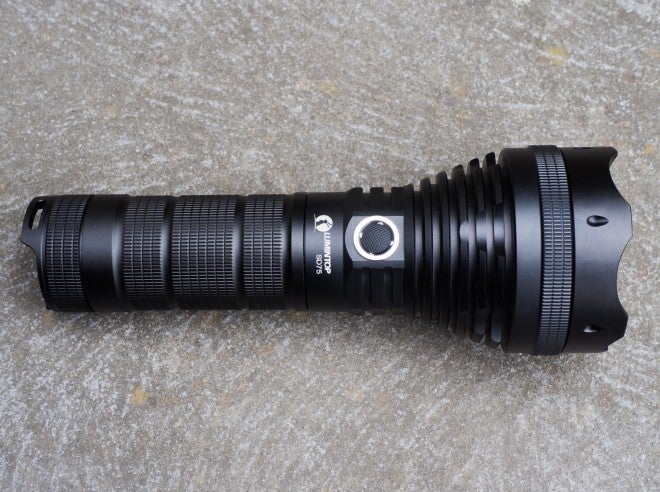
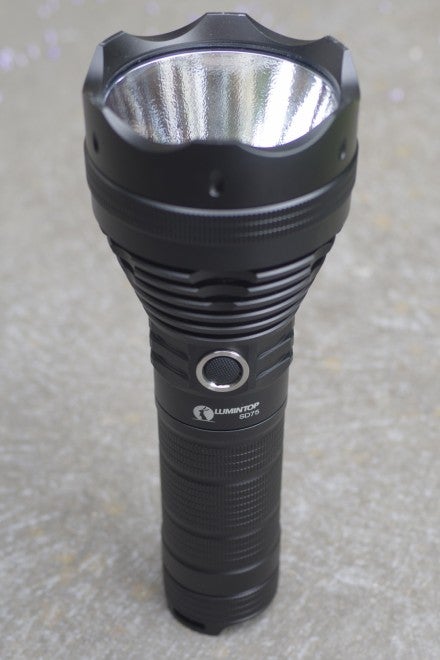
The tail cap supports the SD75 well enough, but I would have preferred a flanged tail cap to give it additional stability.
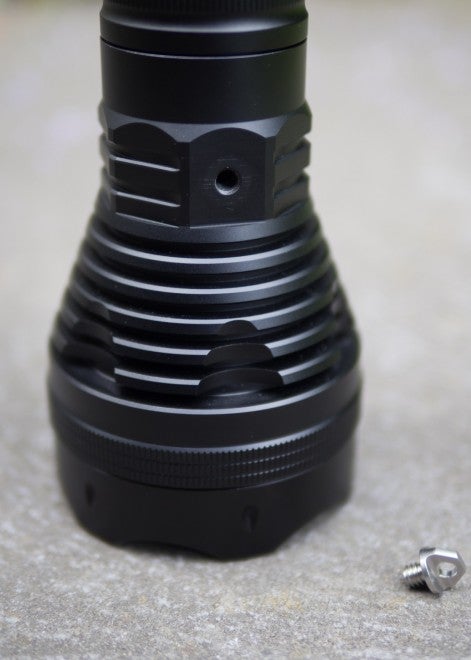
The body is threaded for a tripod and is supplied with a screw-in lanyard loop. I do not plan on using it with a tripod, but if I did need to used it with one, I would need an adapter because the screw hole is to close to the heat dissipation fins. The tripod screw hole should have been placed about an 1″ further towards the rear.
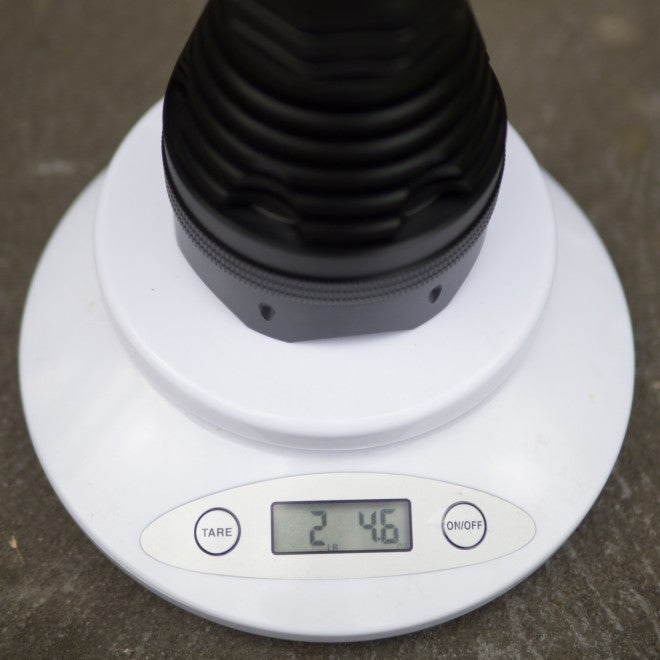
It weights 2.28 lbs (1030 grams) with batteries installed. It feels lighter than it looks and is quite comfortable to carry around.
The SD75 is powered by four 18650 cells. These are not provided, probably due to shipping restrictions. The cells are inserted into a battery module and this is inserted into the flashlight. The battery module can be inserted either way up, which is a nice touch.
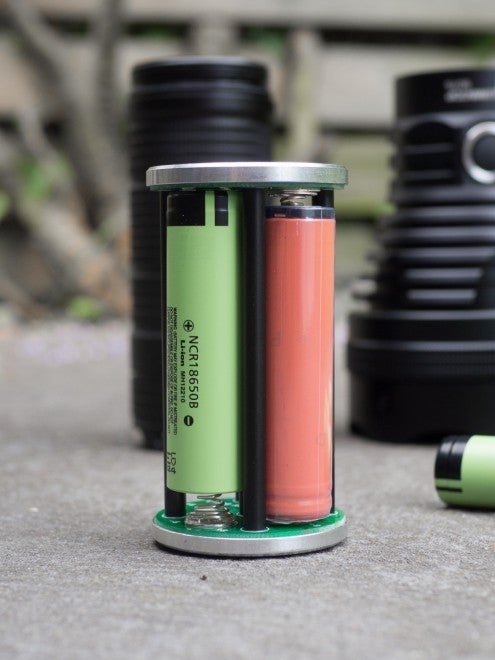
18650 Cells in the SD75 Battery Module. (JUST FOR DEMONSTRATION. DO NOT MIX BATTERY TYPES)
Either protected cells or unprotected cells can be used. In the above photo, on the left, is an unprotected Panasonic NCR18650, my favorite brand (these power Tesla’s electric cars), next to it is a protected Sanyo 18650 (my second favorite brand). As you can see there is plenty of space for the longer protected cells.
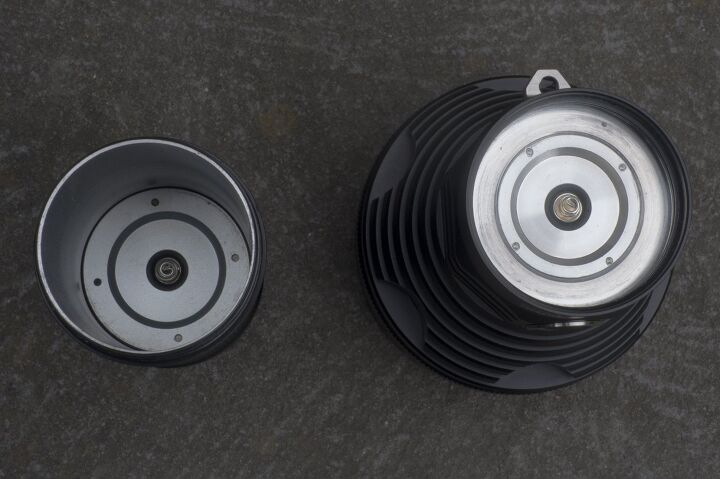
The flashlight can even be used as a USB battery bank by removing the tail cap and plugging in a USB device into one of the two USB charging ports.
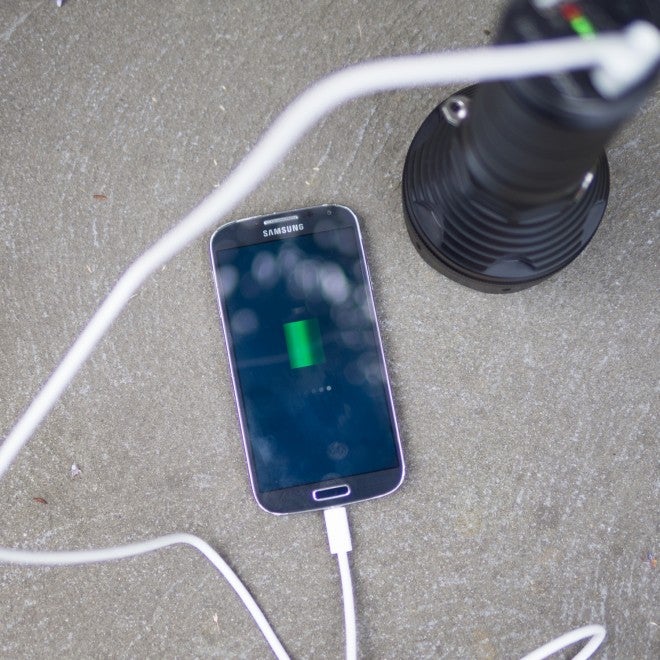
I had no trouble charging my Samsung Galaxy S4 mobile phone. One USB port outputs up to 1A and the other has a maximum output of 2A. A push button turns the power bank on and off. When on, five small LEDs light up to indicate the battery level.
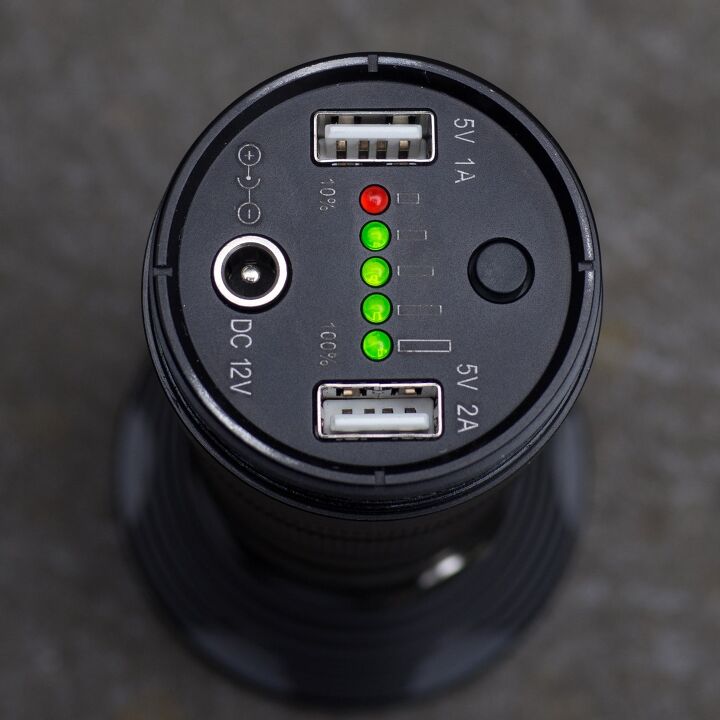
Even if you are not using the power bank, switching it on and replacing the end cap, with its transparent window, allows the battery levels to be easily monitored.
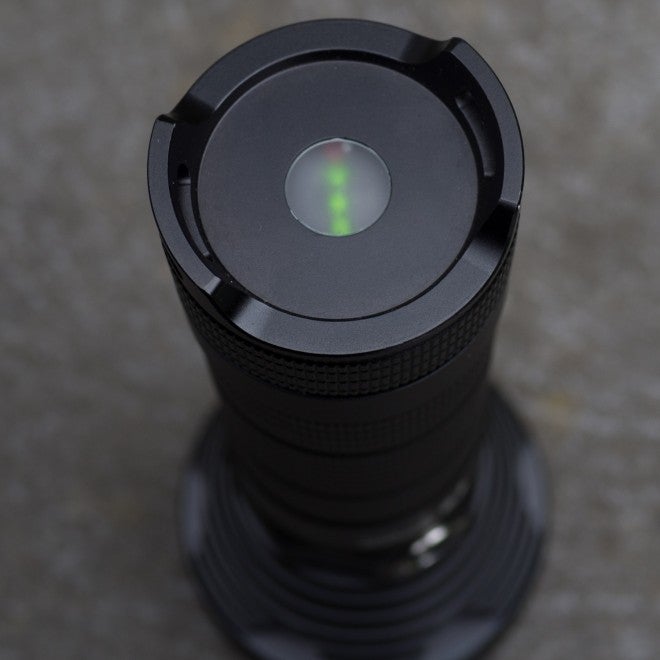
LUMINTOP ships all SD75 flashlights with a small USB lamp. I guess it could be useful as a reading light when camping.
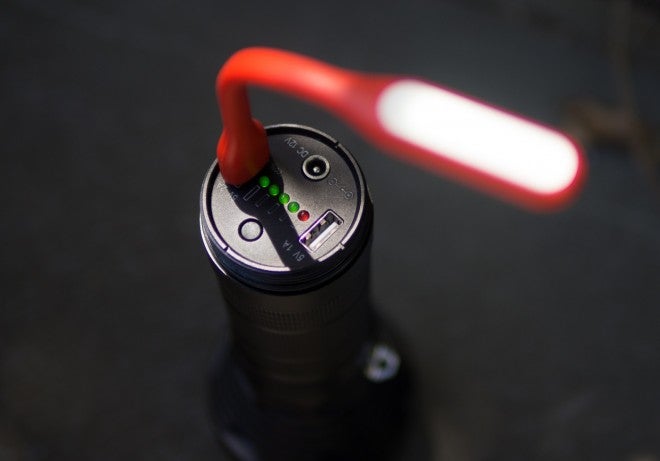
The flashlight has four modes: High, Medium, Low and Strobe. LUMINTOP lists the specifications as:
- High: 4000 lumens
- Medium: 1800 lumens
- Low: 150 lumens
- Strobe: 4000 lumens
I do not have the equipment to test the actual light output from the flashlight. Comparing it to other flashlights, I think the lumen specifications are accurate. The strobe appears to be within the standard 15-20 hz range, and along with 4,000 lumens of light it is very disorientating.
I tested the runtime of the flashlight on High and Medium settings by placing the flashlight on a table indoors and recording how long it took to turn off. I used “protected” 3400mAh 18650 cells which cut out when the voltage gets too low. This is not an ideal test setup. A better test, which would result in longer runtimes, would be using unprotected 18650 cells and a fan to keep the flashlight cooler, simulating more realistic outdoor conditions.
I ran the tests twice and the runtimes I got were:
High: 2:05 hours
Medium: 3:45 hours
Low: I did not test but would expect low would get at least 36 hours, probably more.
If you are using this flashlight outside, or even just holding it in your hand, I would expect longer runtimes as heat would dissipate quicker.
During testing the tail of the flashlight heated up to about 110 °F (45°C) but dropped very quick as soon as I picked it up and walked around, moving air over the heat dissipating fins machined into the flashlight’s head. Let me reiterate my testing procedure represents the worst possible scenario. In normal use I would expect the flashlight to stay relatively cool.
The beam thrown by this flashlight has a “hot” center measuring about 10 degrees and a larger cooler beam measuring 60 degrees (please excuse my poor diagramming skills).
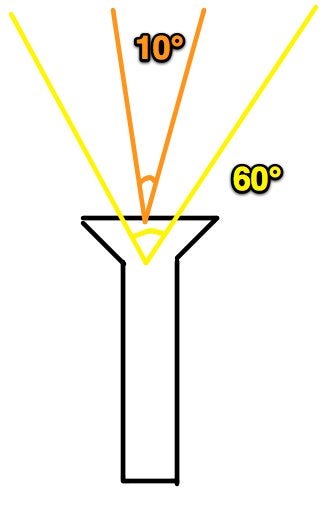
It is incredibly hard to convey the brightness of a flashlight. The company advertises that the beam can be throw 650m (700 yards). I went to a valley near my home and standing on one side shone it across the valley, about 450 yards away. It was impressive how well it lit up the other side. I do not want to exaggerate, so let me be clear: It does not project daylight at that distance, but it was visibly lit up and far more detail could be seen that with just moon and starlight. I can see this flashlight being very useful when hunting at night or in a search and rescue situation.
The below photos were taken 100 yards away from the tree I shone the flashlight at. The photos were taken my with camera in Manual mode. As you can see there is ambient light and the photos would have been far more impressive had I taken it later that night, but in any case photos of flashlight beams only really serve for comparison between the different modes.
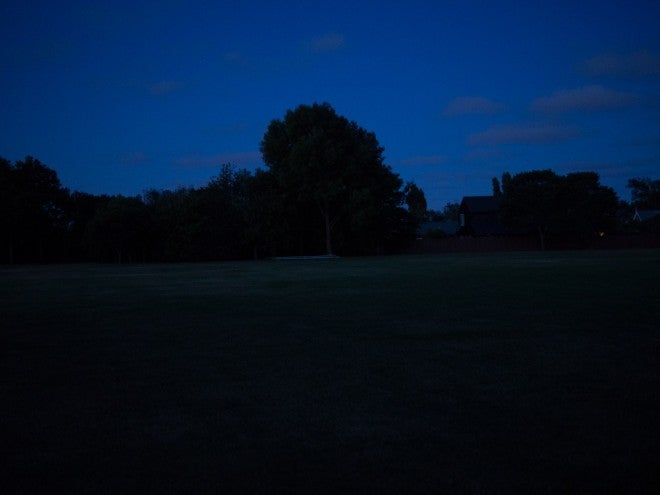
Flashlight Off
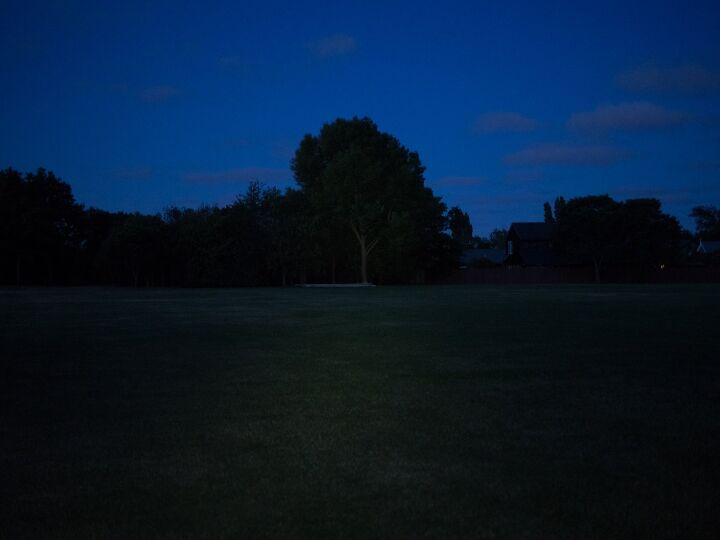
Flashlight on Low
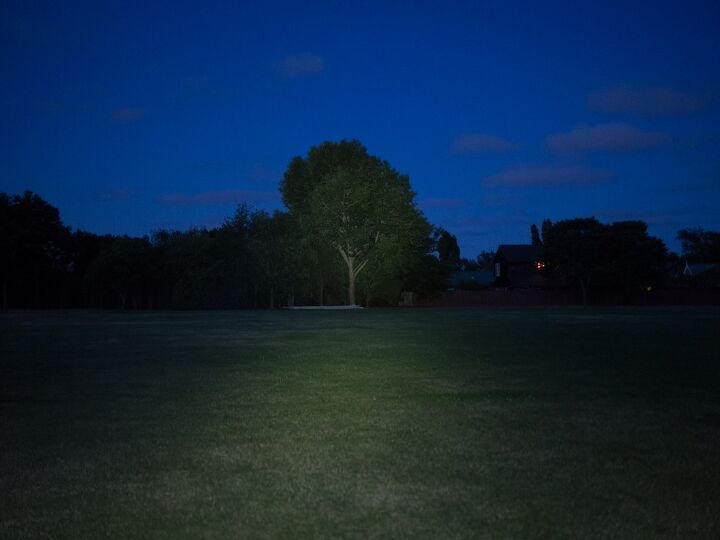
Flashlight on Medium
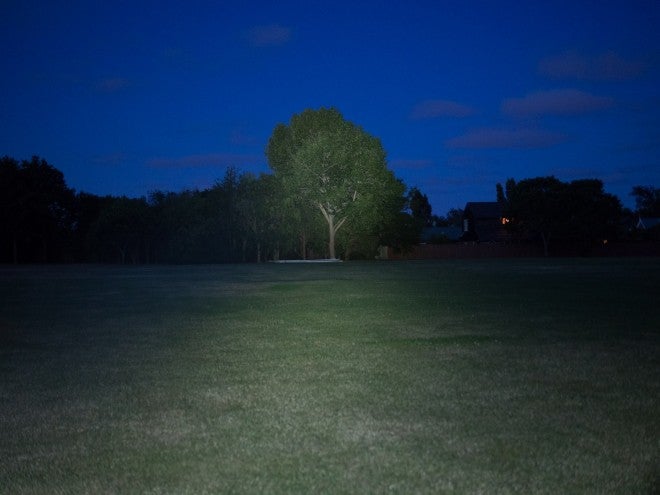
Flashlight on High
The flashlight is IPX-8 waterproof and is supposed to survive for at least 30 minutes at a depth of 6.5 ft (2m). There are decent rubber o-rings that have been lubed with silicone grease on both the head and tail sections. The glass front it sandwiched between rubber rings.
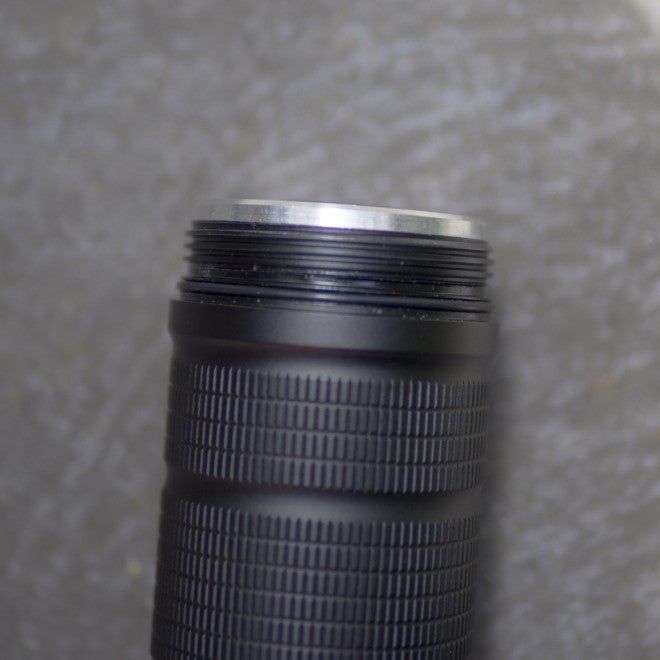
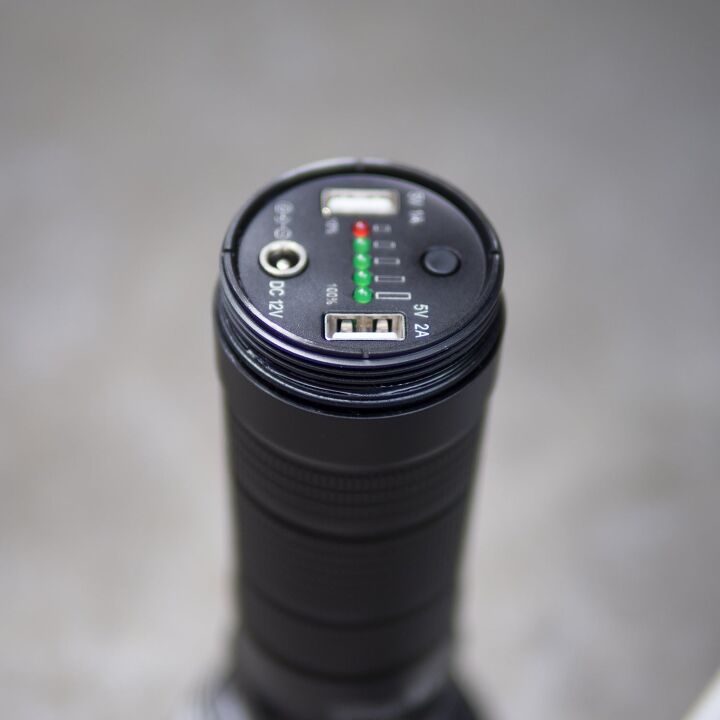
I placed the flashlight in a container of water and left it running on High without any problems.
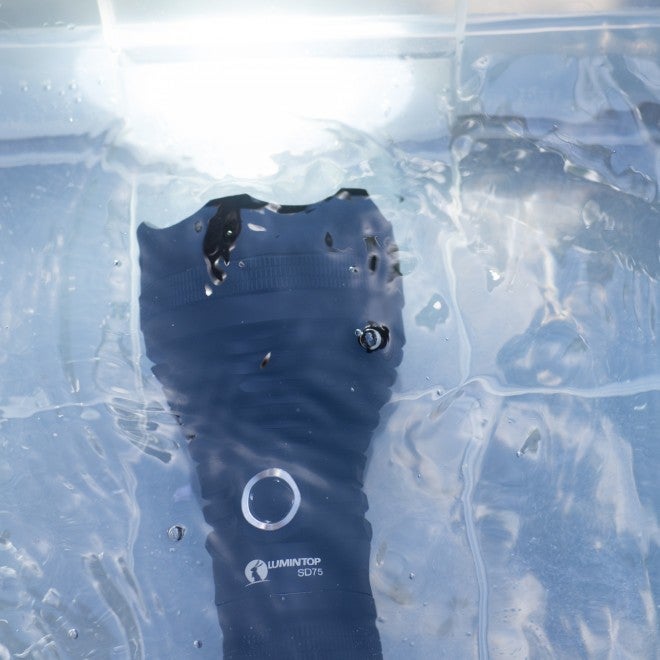
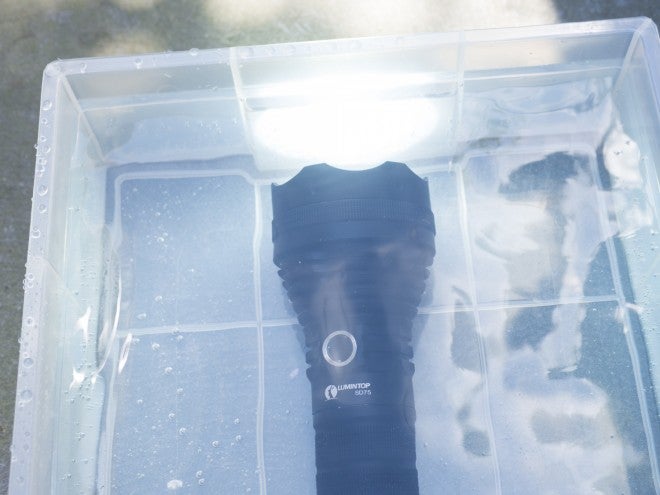
After taking it out there was no sign whatsoever of water penetrating the seals. Two replacement o-rings are supplied with the flashlight, which is a nice touch.
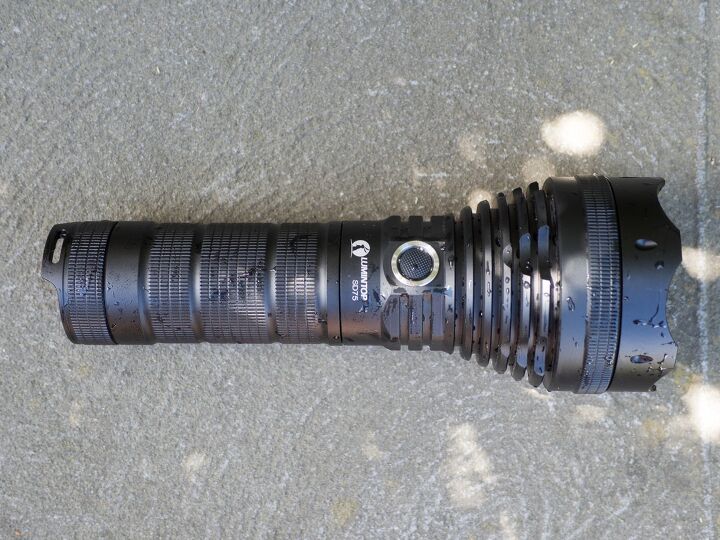
Also included with the SD75 is an aluminium case, a wall charger (12v 2A) and a car charger.
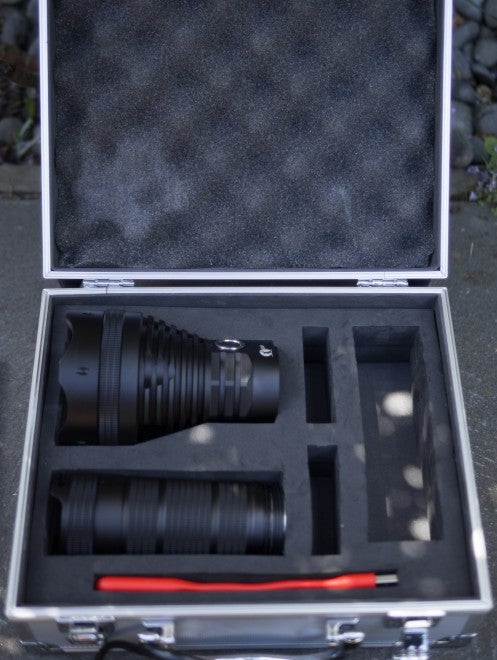
Overall, I am exceptionally happy with my SD75 and I am pleased I did not spend my hard earned money on a more expensive older generation of high-powder LED flashlight. The LUMINTOP SD75 is $190 on Amazon with free shipping. As of today (12/10/15) there is a coupon code listed on its Amazon page for 10% off, knocking the price down to $171 (I don’t know when it expires but the code is ZCLMTSDJ). For me at least, this represents great value. I would not hesitate to recommend the SD75.
 Your Privacy Choices
Your Privacy Choices
